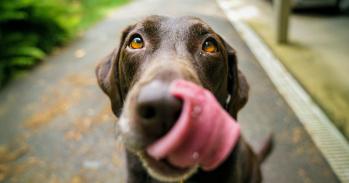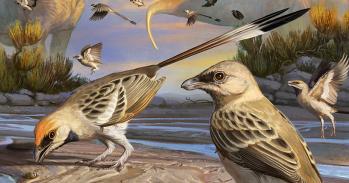
A study of butterflies suggests that when a species adapts, other parts of its genetic make-up can be linked to that adaptation, limiting diversity in the population.
A study of butterflies suggests that when a species adapts, other parts of its genetic make-up can be linked to that adaptation, limiting diversity in the population.
While we cannot forecast the future, an emerging idea is that mutations that have no effect on survival today may be a source of beneficial variation in the future
Simon Martin
A study of tropical butterflies has added to growing evidence that natural selection reduces species’ diversity by moulding parts of their genetic structure, including elements that have no immediate impact on their survival.
The research, by a University of Cambridge-led team of academics, focused on genetic data from South American Heliconius butterflies. It showed that when these butterflies develop a beneficial adaptation through a mutation in their DNA, other parts of the same chromosome – the long strings of DNA that make up the butterfly’s genome – may end up being defined by the fact that they are “linked” to the point where the mutation took place. Natural selection ends up influencing the fate of these linked sites, even though they have no impact on the species’ fitness and long-term survival prospects.
As the adaptation is passed down through the generations as a result of natural selection, this collection of linked genetic sites can be passed on intact, removing genetic variation that previously existed in the population at these sites. This effectively limits the overall amount of variation in the butterfly population.
The study complements similar findings in other species, including humans and fruit flies, which together offer one possible solution to a long-standing paradox in population genetics. This is the fact that while species with bigger populations should be more genetically diverse – because there is more potential for new mutations to occur – in practice they often only exhibit as much diversity as smaller populations.
For example, in the Cambridge-led study, the researchers found that the genetic diversity of Heliconius butterflies is very similar to that of fruit flies, even though fruit flies are far more numerous. They also estimated that the amount of adaptation within Heliconius butterflies caused by natural selection is probably about half that of fruit flies. In other words, because natural selection affects the fruit flies more, reducing variation, they end up exhibiting roughly the same amount of genetic diversity, even though there are more of them.
The researchers stress that this explanation for variable levels of genetic diversity between different species is still, at the moment, a theory. Not all scientists are convinced that natural selection has this effect and argue that the variable diversity of species relative to population size may well have other causes.
Understanding more about what these causes are will, however, help to answer even more fundamental scientific questions – such as how and why species vary in the first place, and when they can really be said to have become distinct enough from their ancestors to represent a species in their own right.
Dr Simon Martin, a Research Fellow at St John’s College, Cambridge, who led the study, said: “We will only be able to understand this fully if we can compare results from across different species. Extending our knowledge to butterflies is a step towards explaining these much broader patterns in nature; it’s only by doing this kind of research that we will know whether these ideas are right or not.”
Martin and his colleagues examined a very large data set of 79 whole genome sequences representing 12 related species of Heliconius butterfly. This large-scale data has only become available in recent years, as a result of advances in genome sequencing which have made the process both easier and more affordable.
The study involved scouring the sequences for an apparent pattern of association between particular sites within the genome and low variation. “That acts as a kind of signature,” Martin said. “If you can see that in a genome, then as far as we can tell it is an indication of selection.”
In addition, the researchers compared the number of variations in the parts of the genome where proteins are coded – and therefore may be responsible for adaptations – with the number of variations in other parts of the genome. It is possible to predict what this ratio would be if variations only occurred by chance. The difference between that prediction, and the actual statistics, suggests the extent to which natural selection has shaped species differences.
The study estimated that around 30% of the protein differences between species of Heliconius are adaptations caused by natural selection. In keeping with theories about diversity in the population of other species, this turned out to be about half the number of protein variations in fruit flies – a larger population with less genetic diversity overall.
Intriguingly, the study effectively suggests that natural selection could limit a species' ability to adapt to future environmental change by removing linked variations that, despite having no immediate beneficial impact on the species, could become relevant to its survival and capacity to cope with its environment in the future.
“Variation is a kind of raw material and you don’t necessarily use it all at any one time,” Martin explained. “It’s something that could be used to adapt and change in the future.”
“Something that has turned up during the last few years in research of this kind is a phenomenon where we see that a species has adapted, and we discover, when we look for the origin of that adaptation, that the mutation was not actually new. Instead, it was a variation that previously existed in the population. So while we cannot forecast the future, an emerging idea is that mutations that have no effect on survival today may be a source of beneficial variation in the future.”
The study appears in the May 2016 issue of Genetics.

The text in this work is licensed under a Creative Commons Attribution 4.0 International License. For image use please see separate credits above.




